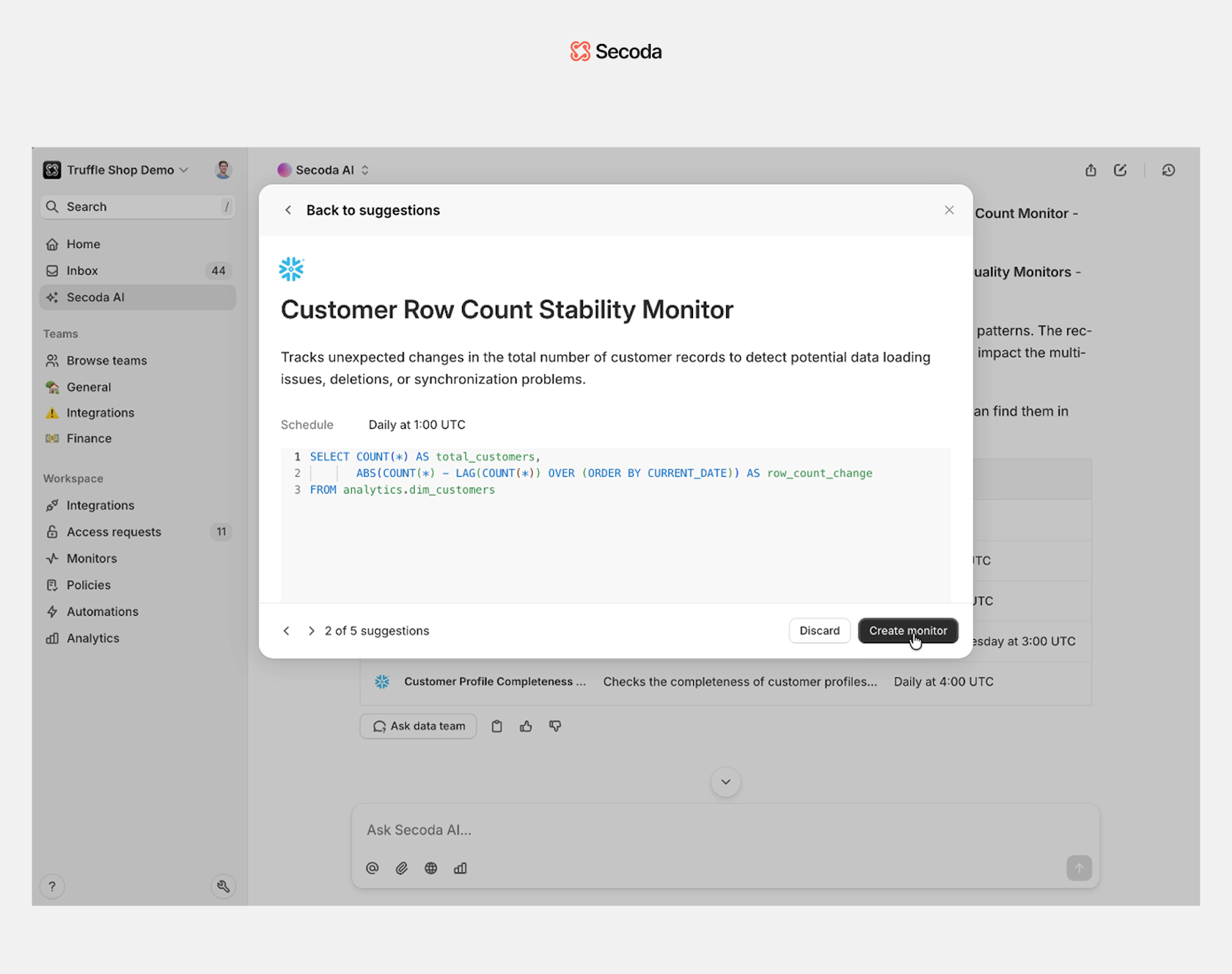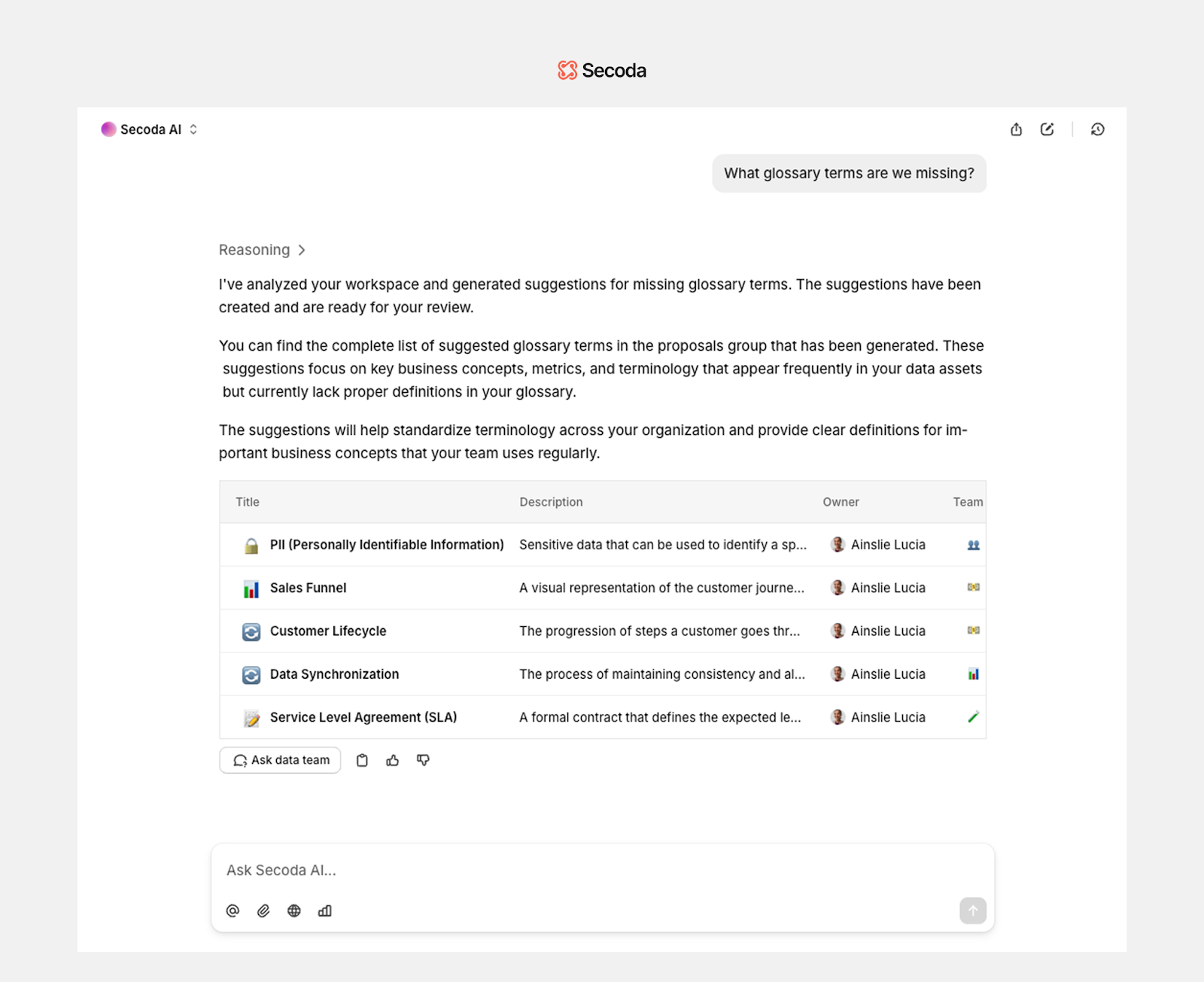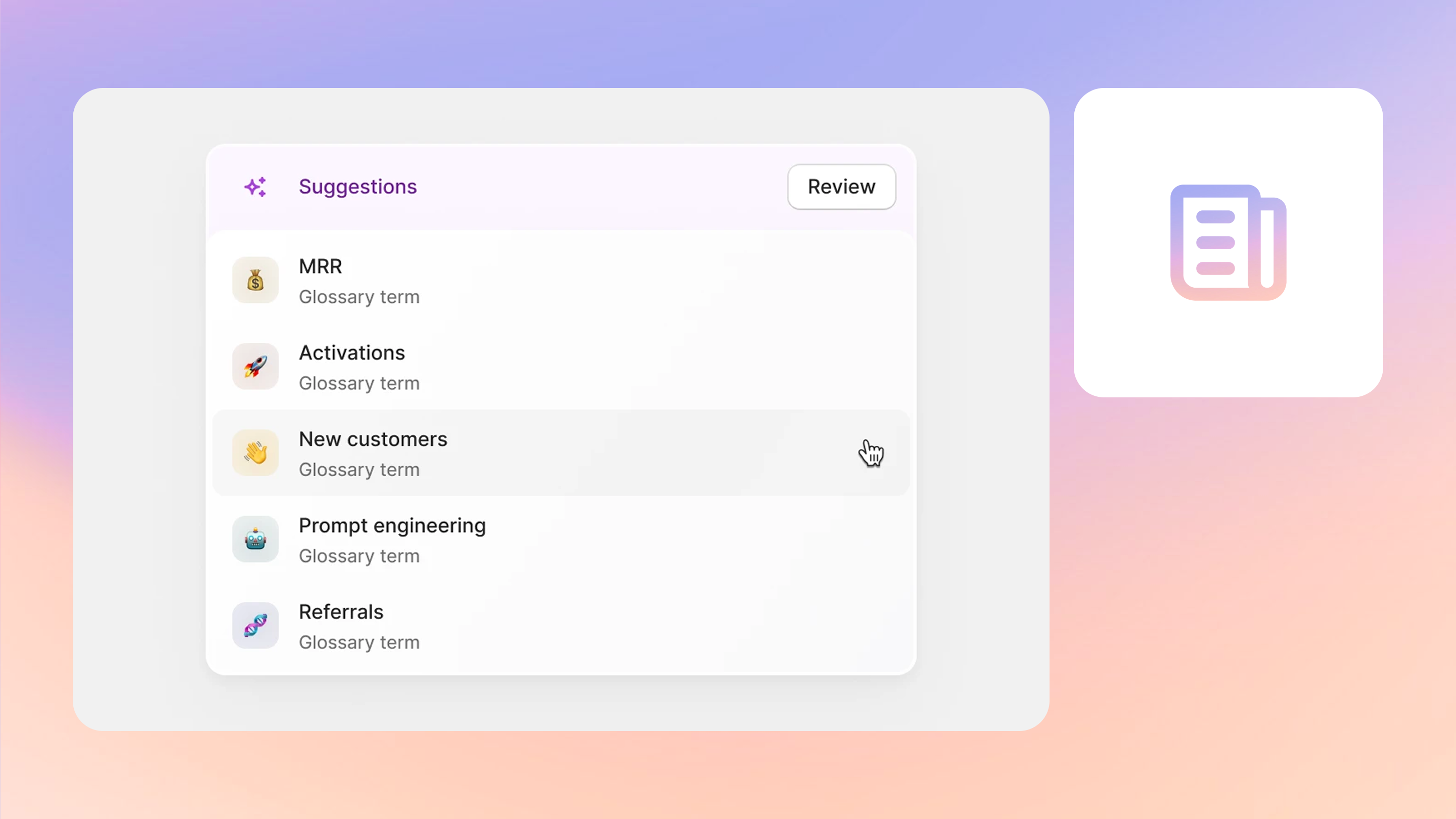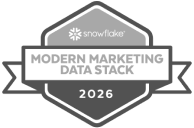Keeping up with your organization’s growing data ecosystem is difficult. Identifying what monitors to set up, which assets need better documentation, or how to create standardized metric definitions often turns into hours of back-and-forth and manual review.
But what if your data catalog could do the work for you?
Today, we’re introducing Secoda AI-powered suggestions, a new capability that automatically scans your workspace and recommends high-impact actions based on query patterns, data quality signals, and metadata coverage. These recommendations are built to help data teams reduce risk, improve documentation, and get more value from their metadata.
Whether it's flagging sensitive data with no owner, surfacing unclear business terms, or suggesting monitors for critical tables, Secoda AI works quietly in the background to reduce your manual workload and strengthen governance across the board.
Observability suggestions: Your smart monitoring assistant
Observability suggestions help you monitor what matters most by analyzing how your data is actually used across your organization. It identifies your most critical assets and suggests targeted monitors with pre-configured logic and thresholds that reflect real usage and historical patterns.
Rather than relying on guesswork, Secoda AI shows you exactly where to set up monitors to catch issues early and reduce noise.

What it does
- Identifies critical tables: Surfaces your most important assets by analyzing query volume, dashboard dependencies, and historical volatility.
- Recommends relevant monitors: Automatically suggests row count, freshness, column-level, or pipeline monitors with sensible thresholds, based on how the data typically behaves.
- Suggests smart scheduling: Recommends when to run checks based on refresh patterns and usage trends so your alerts are timely and relevant.
Example workflow
Let’s say your team relies heavily on a monthly_revenue_summary table that powers key dashboards for finance, growth, and leadership.
While in a chat with Secoda AI about this table, it detects that it has high query volume and recent schema changes. It recommends the following:
- A row count monitor to track the number of rows over time and catch unexpected drops
- A freshness monitor to alert you if the table hasn't been updated within the expected 24-hour window
- A custom SQL monitor with a suggested query that calculates the total number of unique customers for the month, returning a single value for tracking engagement
Each recommendation includes a pre-set threshold and schedule based on actual data behavior. You can apply all of them instantly from the chat. Monitors can also be deployed in bulk across multiple assets to save time and ensure consistency.
Why it matters
Too often, monitoring strategies are reactive and set up only after a broken dashboard or a missed report. Secoda AI flips that approach. By continuously analyzing usage patterns and suggesting targeted monitors in real time, teams can shift from reacting to data issues to anticipating them. This not only reduces downtime and alert fatigue, but also builds a stronger foundation of trust in your data across the business. Over time, this proactive approach improves data reliability, increases confidence in reporting, and frees up your team to focus on more strategic work.
Cataloging suggestions: AI-powered glossary that builds itself
Inconsistent definitions are one of the most common and costly gaps in a data organization. Misalignment on terms like “Customer Lifetime Value” or missing context around “Attribution Model” can slow onboarding, introduce reporting errors, and create friction between business and technical teams.
Cataloging suggestions in Secoda AI help solve this by proactively suggesting glossary terms your team actually uses. It analyzes real queries, models, and metadata across your workspace to surface missing definitions and connect them directly to your data assets.

What it does
- Analyzes your workspace: Scans your catalog, queries, and usage patterns to identify frequently used but undocumented terms.
- Generates structured definitions: Produces AI-generated glossary entries with clear, contextual explanations tailored for both technical and business users.
- Links terms to data assets: Connects each term to relevant tables, columns, dashboards, and queries so users can understand where it appears and how it’s used.
Example workflow
You might start by asking Secoda AI, “What glossary terms should I add to my workspace?”
Secoda activates the glossary sub-agent, which reviews your usage history and surfaces the most common terminology gaps. Within seconds, you'll see a curated list of suggested terms ready to review and publish.
Example terms might include:
- Customer Lifetime Value - referenced in multiple dashboards, calculated differently by marketing and finance
- Attribution Model - mentioned in paid media reports but lacking documentation on logic or weighting
- Churn Rate - used in recurring revenue dashboards, but inconsistent in time frame or cohort logic across teams
- Conversion Window - applied differently in product and marketing data models
- Active User - referenced across segments and dashboards with no single shared definition
Click into any term to view the generated definition, suggested owner(s), and links to related data sources. You can edit it for clarity or publish it to your workspace glossary instantly.
Why it matters
When definitions live in people’s heads or are scattered across tools, teams waste time asking the same questions and revalidating metrics. Even worse, they risk making decisions based on conflicting assumptions.
Cataloging suggestions help prevent that by capturing how your team actually uses your data and turns that into standardized, accessible documentation. Instead of relying on top-down enforcement, you get a bottom-up glossary that evolves with your organization. This speeds up onboarding, reduces miscommunication, and creates a culture of shared understanding that scales as your team grows.
Embedded into your workflow
The real value of Secoda AI comes from delivering recommendations at the right time and in the right place, directly within your existing workflows.
Instead of opening separate tools, running audits, or waiting on quarterly governance reviews, Secoda brings observability, cataloging, and documentation suggestions into the work your team is already doing. You don’t have to go looking for what needs attention. The platform highlights it in context, when it's most relevant.
Here’s how that plays out:
- A data engineer investigating a pipeline alert also gets a suggestion to add a missing data owner to the upstream table
- A business analyst building a new dashboard receives a prompt to define a commonly used term before it spreads without documentation
- A team resolving a data quality issue is shown additional monitor recommendations based on table usage and recent query patterns
These are not separate tasks or interruptions. They’re embedded into the tools and workflows your team already uses, which makes them easier to act on and harder to ignore.
The impact is measurable:
- Improved governance coverage without increasing manual overhead
- Faster onboarding by reducing guesswork and tribal knowledge
- Better cross-team alignment around shared definitions, ownership, and quality standards
Teams that use embedded suggestions don't wait for problems to surface. They prevent them by building compliance, clarity, and collaboration into the way they already work.
Get started with Secoda suggestions
Secoda AI-powered suggestions take the guesswork out of data governance. By embedding recommendations directly into your workflows, Secoda AI helps your team catch issues earlier, reduce manual effort, and stay aligned on definitions, ownership, and quality standards without slowing down your work.
Whether you're scaling your documentation, improving data trust, or tightening compliance, Secoda AI helps you move faster with more confidence.
Start using Secoda AI today and get proactive recommendations that help you manage data more effectively across your entire ecosystem.






.png)
.png)








